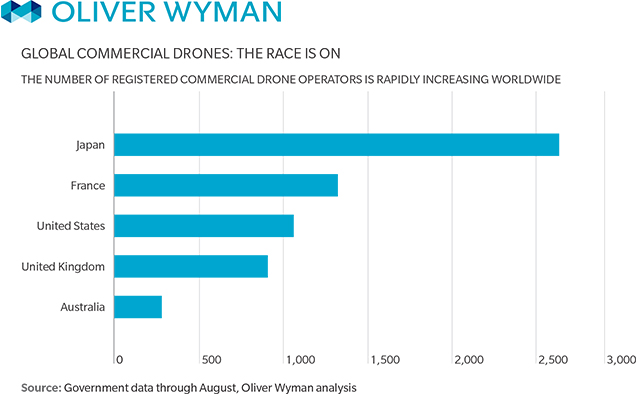By 2035, the number of unmanned aerial vehicles in operation in the U.S. is expected to surpass the number of manned aircraft in operation. The U.S. commercial drone market could easily be worth $5 billion, according to the Volpe National Transportation Systems Center, and the global commercial market may be several times greater.
In Japan, farmers have been using commercial drones for decades to inspect crops. In Canada, police use drones for search-and-rescue operations. In the UK, drones are used for commercial photography. In the US, all of those activities have been illegal without special permission from regulators.
In February, the Federal Aviation Administration proposed rules that are a good first step to create a friendly environment for commercial drone operators to get off the ground. The rules are based on the actual risk that the small, unmanned aircraft pose. However, finalizing the rules will take a couple of years, and companies would have to operate commercial drones within the line of sight of the operator and away from people, leaving activities like package delivery out of bounds.
As the FAA has demonstrated through its 10-year effort to regulate the commercial use of drones, rapidly evolving technology can easily outrun the regulatory process. Already, the US starts out behind in a growing industry as other countries have implemented and even revised their own rules. The delay and restrictions mean the commercial drone industry is developing elsewhere. And a few major US companies, like Google, are moving substantial portions of their drone research operations overseas. The US is leaving billions of dollars in economic growth on the table and giving other countries the benefit of coming to market first.
It is not too late to catch up. With reasonable and globally competitive regulations, the US could still become a leader in the commercial drone industry.
Source: Oliver Wyman

